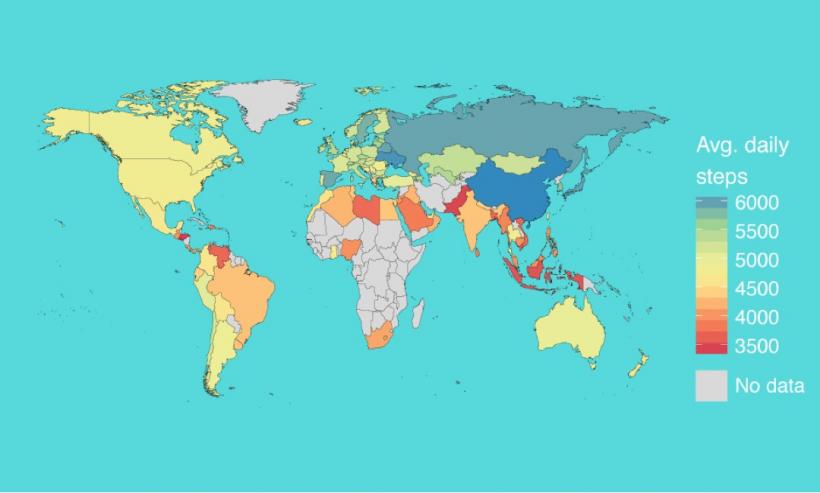
Activity Inequality study From Stanford
Today, in shocking but not shocking health news: Activity inequality and obesity. And death. Etc.
Is walking the key to a long life? More evidence points to get yo' ass out of yo' chair.
People at Stanford are so smart.
A new study involving 717,000 people from 111 different countries tracked steps via smartphone over a period of 95 days, finding that countries with the highest "activity inequality" also had the highest rate of obesity.
You're probably wondering what "activity inequality" is, which is a fair question.
The term describes the activity distribution among a population — countries where some people walk much more than others are designated as a high activity inequality, while those where most folks walk about the same amount, have the lowest activity inequality.
Researchers rated countries by their activity inequality and compared these numbers (via some science-y formula you can find here) against obesity rates. Countries with the highest activity inequality also had the highest rate of obesity. Countries where most people walk about the same amount each day have the lowest activity inequality (and better overall health).
There are lots of things we could say about the flaws in using obesity as a general health metric, but the reality is that most studies use it because it's the conceptualization of health that can capture the most data. "Obesity" is a general health risk that offers a more wholistic analysis of health than, say, heart disease or arthritis on their own. Until science figures out a better metric to use, it's important to remember that this data is meant to represent whole countries, not individual people with unique backgrounds, abilities, and habits.
One thing this study absolutely gets right is the importance of walking for overall health. Time and time again, walking has been shown to be the best exercise humans can do. And we definitely need to do more of it.
We simply don't move enough.
A 2012 study in British medical journal The Lancet, found that 5.3 million deaths annually are linked to inactivity — that's 1 in 10. The study suggests that if physical inactivity rates were to go down by even 10% to 20% worldwide, between a half-million and 1.3 million lives could be saved yearly, raising global life expectancy by almost a year. That's a lot. Just by walking? Apparently, yes.
The surprising thing about the study out of Stanford isn't that inactivity contributes to pathology (ie disease), the surprising thing is that even a higher average activity level in a population isn't suggestive of better health. It's all about moving consistently.
The data in color:

TOP 10 LOWEST ACTIVITY INEQUALITY:
| Rank | Country | Activity Inequality |
|---|---|---|
| 1 | Hong Kong | 22.2 |
| 2 | China | 24.5 |
| 3 | Sweden | 24.6 |
| 4 | South Korea | 24.7 |
| 5 | Czech Republic | 24.8 |
| 6 | Japan | 24.8 |
| 7 | Singapore | 24.9 |
| 8 | Norway | 25.2 |
| 9 | Ukraine | 25.2 |
| 10 | Netherlands | 26.1 |
BOTTOM 10 HIGHEST ACTIVITY INEQUALITY:
| 36 | United Kingdom | 28.8 |
| 37 | Qatar | 29.1 |
| 38 | India | 29.3 |
| 39 | Greece | 29.5 |
| 40 | Philippines | 29.8 |
| 41 | New Zealand | 30.1 |
| 42 | United States | 30.3 |
| 43 | Egypt | 30.3 |
| 44 | Canada | 30.3 |
| 45 | Australia | 30.4 |
| 46 | Saudi Arabia | 32.5 |
Surprised? Probably not.
Hong Kong is doing pretty darn good. The US, not so much.

Not surprisingly, larger cities have lower activity inequality. It's pretty easy to get your errands done in New York city where everything is within a few blocks of your house/apartment/closet (it's really expensive to live there). Folks in rural areas tend to move less.

Scientific studies are always so... scientific, but I can boil all of this down for you real quick: Walk. More. Daily. As much as you can.
I mean, if you want to live and stuff.







